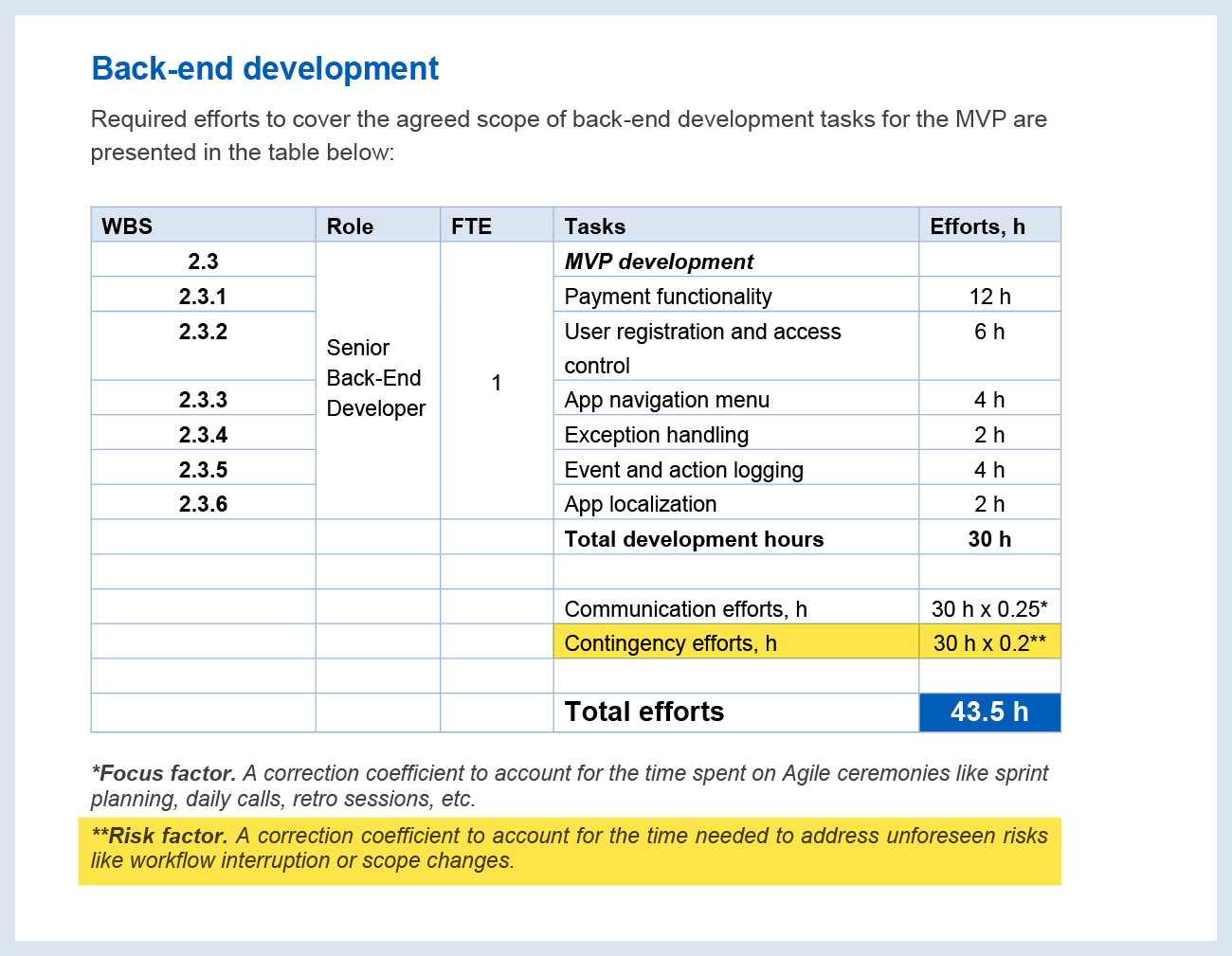ScienceSoft's Best Practices for Contingency Planning
Contingency planning is an integral part of our project management framework, which helps us to effectively mitigate risks and ensure project continuity in the face of unforeseen challenges.
Here are the key highlights of our contingency planning procedures:
Risk management
We proactively identify potential risks in each project and prepare tailored mitigation strategies:
Operational risks
We review our and Customers' processes and resource allocation to identify bottlenecks and inefficiencies that could hinder project execution. This includes evaluating stakeholder availability and team composition and establishing well-documented, scalable procedures and efficient communication. To prevent unplanned expansions, we control project scope and introduce a clear change management process.
Technological risks
We assess the project's technical landscape, including the architecture's efficiency, the stability and compatibility of the chosen technologies, potential cybersecurity threats, and the feasibility of integrating new systems with existing infrastructure. We also evaluate the risk of technological obsolescence and plan for periodic upgrades or alternative solutions.
Business risks
To anticipate business-related challenges that can impact project success, we analyze the market competition, the regulatory environment, and the project's financial health. We also factor in the risks related to delivery speed and accuracy, user adoption, software maintenance costs, and more.
External risks
We consider external factors such as economic fluctuations, geopolitical events, legislative changes, shifts in customer preferences, the evolving technology landscape, and other events.
Time and budget contingency
We allocate reasonable time and budget reserves specifically for unexpected challenges. This ensures that we can address issues without compromising the project's scope, quality, or delivery timeline.
Check an example of our estimates with included reserves

Hide
Dynamic project management
We employ flexible project management methodologies, such as Agile and, specifically, Scrum. At ScienceSoft, these methodologies are not just buzzwords but deeply ingrained practices that allow for dynamic adjustment and iterative development, ensuring that our projects remain resilient in the face of volatility. For example, we can swiftly adapt to regulatory changes by updating software and development process sprints, accommodate sudden budget cuts through backlog grooming, and respond to user feedback on an MVP by iterating on critical features first.
Maintaining a transparent dialogue
We maintain open and transparent lines of communication with our clients, providing regular updates on project progress and any challenges we encounter. This ensures that all stakeholders are informed and can contribute to decision-making processes.
